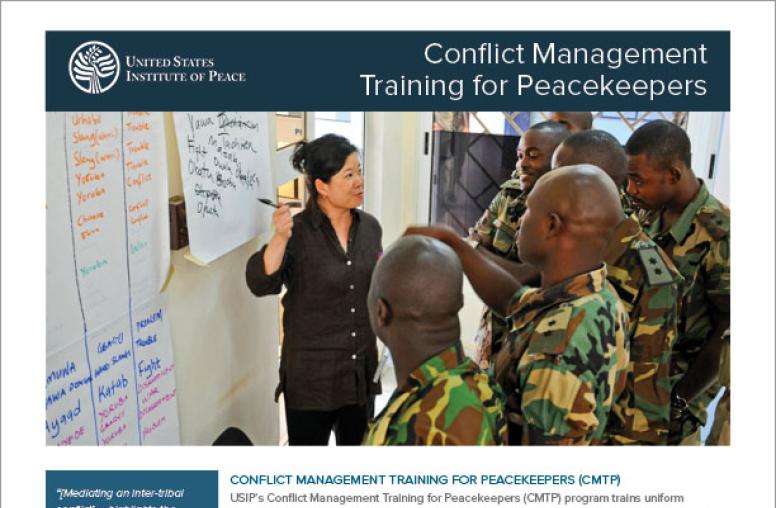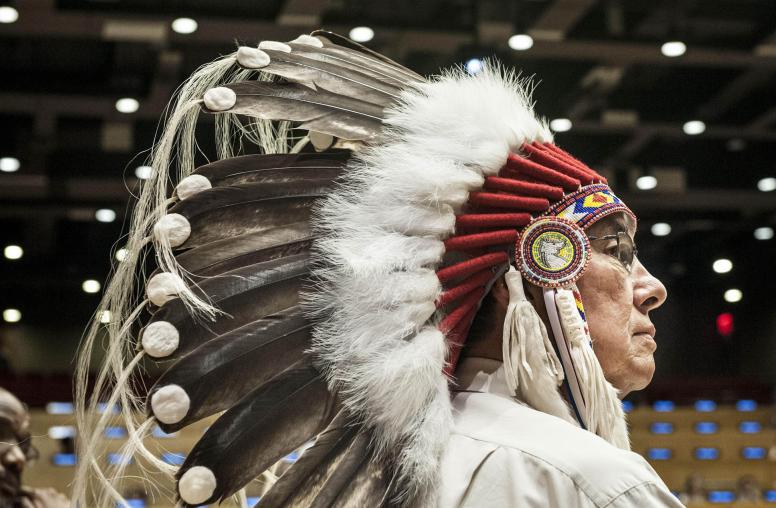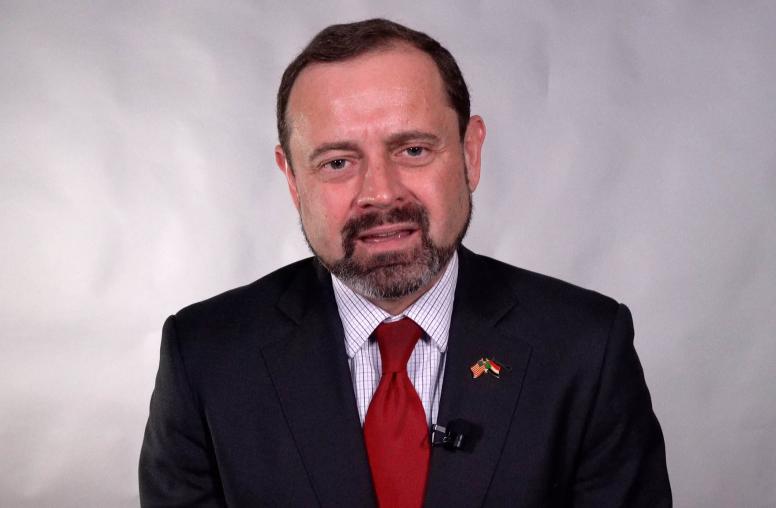Toward Disability-Inclusive Peacebuilding
How can the international community make peacebuilding more accessible and empower people with disabilities?
When it comes to conflict and peace, people with disabilities are often overlooked — with potentially devastating consequences. People with disabilities are disproportionately affected by violent conflict, where basic humanitarian protections can unintentionally exclude them if not made accessible. When it comes to peacebuilding, people with disabilities have been routinely blocked from the table — and even when they are included, they’re often seen only as beneficiaries, not as full partners. The resulting dynamic has often left people with disabilities struggling to find proper resources during times of conflict and consistently shut out from shaping peace in their communities.

“It’s literally about life and death,” said Gerard Quinn, the U.N. special rapporteur on the rights of persons with disabilities. Speaking at a USIP virtual event, Quinn reflected on how recent developments, such as the Convention on the Rights of Persons with Disabilities (CRPD) and U.N. Security Council Resolution (UNSCR) 2475 on disability, armed conflict and humanitarian emergencies have created an opportunity to “press the reset button disability. Instead of being viewed as a medical object … the CRPD is anchored on personhood, on visibility, on inclusion and equality.”
Reframing Our Understanding of People with Disabilities
While people with disabilities are visible in international law dating back to the Geneva Convention of 1949, the focus has very rarely been on the people themselves. The problem, according to Quinn, is that people with disabilities have been “generally visible only partially as human objects, not as human subjects,” with too much focus on medical needs and not enough on the person themselves.
Fixing that is a matter of framing, said Rashad Nimr, a conflict advisor on youth and social inclusion for USAID: “We have to move away from the language of vulnerability and the unequal power dynamics this narrative evokes … We have to recognize the agency of people with disabilities.”
Nimr sees the historical model of addressing disability as antiquated and alienating. “We all have a shared enemy in ableism,” said Nimr. “We have to stop thinking about disability as a problematic or negative thing.”
Emina Ćerimović, a senior researcher on disability rights at Human Rights Watch, concurred with Nimr. In her research, she found that while people with disabilities are disproportionately affected by violent conflict and may require accommodations to make aid accessible, the way humanitarian organizations approach the problem focuses too much on what people with disabilities lack rather than what they have to offer to peacebuilding.
To help reframe the issue, Ćerimović recommended that organizations and institutions abandon the “needs perspective” and instead approach people with disabilities with a human rights perspective — so rather than seeing accessibility as a need, they can see that people with disabilities have a right to protection like everyone else. Simple changes in how we talk about disabilities can both reduce negative stereotypes and open the door to incorporating the needs of people with disabilities into all forms of aid.
When Disability Stems from Conflict
When discussing people with disabilities, Fon Dieudonne, the national coordinator of the ThinkBig Association in Cameroon, says that it’s important to differentiate those who acquire their disability during conflict from other forms of disability: “It has a different dimension of trauma.”
In post-conflict environments, those who were injured or acquired a disability can often feel anger —something Dieudonne has seen boil over into a desire for revenge. Left unaddressed, the mental health effects of disability can cause renewed spurts of violence and instability within communities.
Ex-combatants are particularly at risk, said Janet Lord, an advisor to Gerard Quinn and senior fellow at the Harvard Law School Project on Disability. “Reintegration of combatants with disabilities is an ancient problem,” said Lord. “As long as there’s been conflict, there have been ex-combatants with disabilities, some of whom will have very significant support needs.”
Not Just Beneficiaries
“We have known for a while that people with disabilities are disproportionately affected by violent conflict,” said Ćerimović. “So, why are they still not a part of every effort to prevent conflict?”
This question looms large for the peacebuilding field, as previous efforts have fallen short. Going forward, the inclusion of a diverse array of people with disabilities in peacebuilding will not “be seen as a nice-to-have, it’s going to be seen as a need-to-have,” said Nimr. “Inclusion, equity and justice are not resource scarce.”
This means not only including people with disabilities in the process but ensuring “accessibility in each piece of the political process,” said Ćerimović. “Including providing access to information, transportation and adequate resources.”
To empower people with disabilities, there will also need to be investment in education and collaboration within communities and organizations of people with disabilities. “We cannot give what we don’t have,” said Dieudonne. “Most people with disabilities in our contexts are not educated.”
Organizations like Dieudonne’s help people with disabilities to find the resources to become leaders in their communities, but he insists more is needed. Similarly, Quinn noted that we need to bring communities of people with disabilities together in order to avoid “silos.”
Several panelists also noted the possibility that people with disabilities can connect with other movements to find common ground. Concurrent efforts on other topics, such as the U.N.’s Women, Peace and Security agenda as well as its youth initiatives, could offer an ideal place to start.
Meanwhile, as U.N. special rapporteur, Quinn says his office is scheduled to present the first of its reports to the U.N. General Assembly this fall. This was welcome news to Ćerimović, who said the U.N. needs to translate UNSCR 2475 into country-specific action plans and consult with people with disabilities to ensure efforts are inclusive and accessible.
As these efforts ramp up, Nimr stressed the need for more tracking of progress: “We need data. The usage of data is the best way to improve resources.”
But just as inclusion at all levels is necessary, so is breaking down the walls between various disciplines. To more fully and equitably incorporate people with disabilities into peacekeeping, disability issues need to be embedded from start to finish in preventing and mitigating conflict. “We see this as part of a continuum, connecting the conduct of conflicts with rescue operations, humanitarian action, rehabilitation [and] international criminal responsibility,” said Quinn. “There are very clear provisions for protecting people with disabilities … but the point is that it’s not protection in the old sense, it’s protection keyed into a much broader agenda of human empowerment.”
Doing so will allow people with disabilities to be “not just victims of violence, but agents of change,” said Quinn — something he’s already seen come to fruition in his native Ireland: “You only have to look at the tremendous work of Disability Action, Monica Wilson and others in Belfast throughout the 1990s, paving the way for a sustainable peace process on my island.



